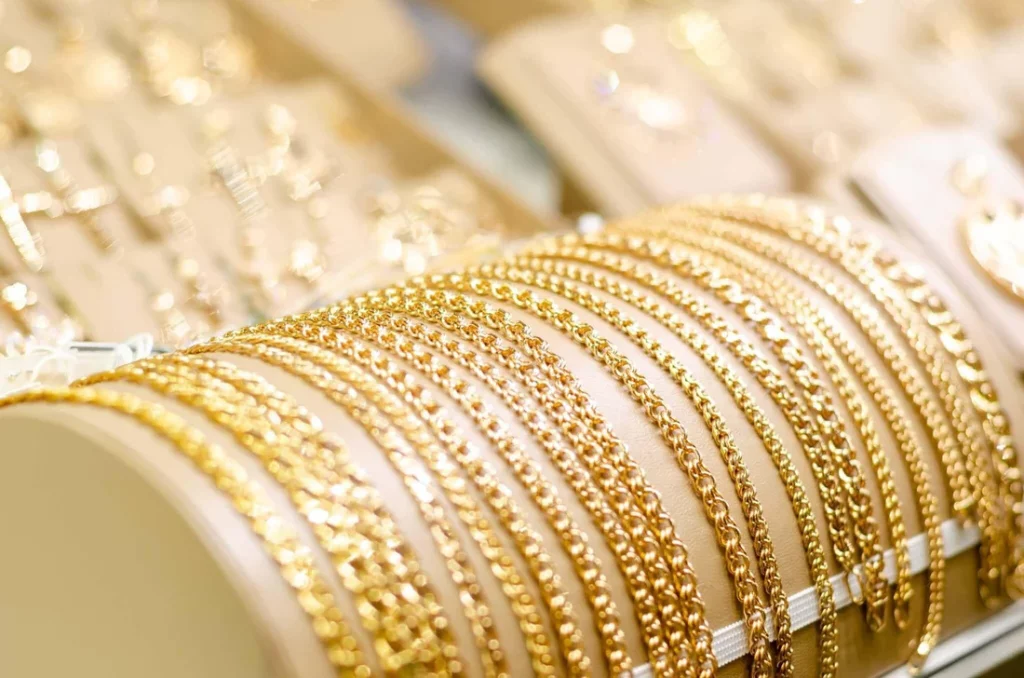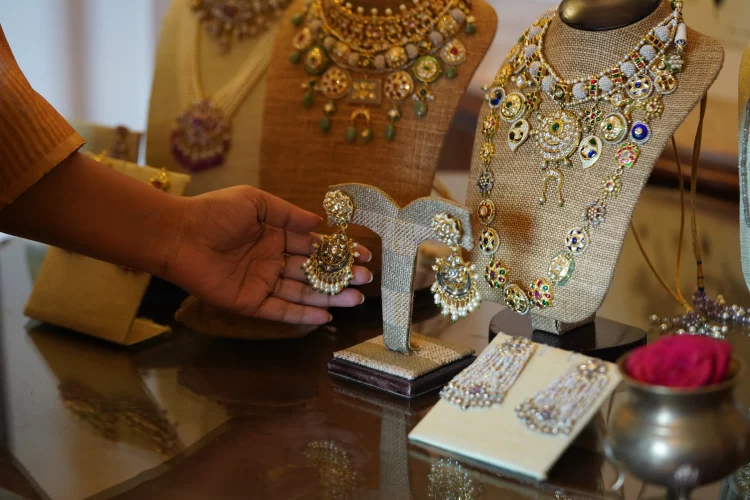Gold jewelry has long been regarded as both a luxury item and a valuable asset for investment. However, understanding the price dynamics of gold jewelry involves a deeper analysis of several factors, ranging from supply and demand to the intricate details of craftsmanship, brand value, and market trends. In this article, we will examine the key forces that drive gold jewelry prices, compare the performance of jewelry versus gold bullion, and offer insights into how to assess the investment potential of different types of gold jewelry.
How Supply and Demand Influence Gold Jewelry Prices
The basic economic principle of supply and demand plays a significant role in determining the price of gold jewelry. However, unlike other forms of gold, jewelry prices are influenced by a range of additional factors that can vary from one piece to another. To understand the price fluctuations of gold jewelry, it is important to consider how both the global supply of gold and the demand for jewelry intersect.
1. Global Gold Supply
Gold is a finite resource, and its supply is subject to fluctuations based on mining output, geopolitical factors, and investment demand. Global gold production has increased steadily over the years, but it remains constrained by factors such as mine closures, resource depletion, and political instability in mining regions. As a result, the price of gold may rise when the supply of gold becomes tighter or when there are disruptions in major gold-producing countries, such as South Africa, China, or Russia.
In the context of jewelry, the price of gold directly correlates with the cost of raw material. As the price of gold rises due to supply shortages or high demand in other sectors (such as investment or central bank purchases), jewelry manufacturers must adjust their prices to reflect these increases in raw material costs. The more gold jewelry is made with high-karat gold, the more sensitive its price will be to fluctuations in the gold market.
2. Demand for Gold Jewelry
The demand for gold jewelry is influenced by cultural preferences, fashion trends, and economic conditions. In many parts of the world, gold jewelry is not only a symbol of wealth and luxury but also an important cultural asset. In countries like India and China, gold jewelry is deeply intertwined with family traditions, weddings, and significant life events. Therefore, periods of economic prosperity in these regions often see increased demand for gold jewelry, which can drive up prices.
In addition, global shifts in consumer preferences, particularly with the growing interest in sustainable and ethically sourced gold, are shaping the demand for jewelry. The increasing awareness about responsible sourcing of precious metals has led consumers to prioritize brands that offer environmentally friendly options. As demand for ethically produced gold jewelry rises, this can also influence price dynamics in the market.
Key Pricing Factors for Jewelry, Including Craftsmanship and Brand Value
The price of gold jewelry is not solely determined by the cost of the gold itself. Several other factors, such as craftsmanship, design, and brand value, significantly impact the final price of a piece. Understanding these factors is key to assessing the value of a piece of jewelry beyond its gold content.
1. Craftsmanship and Design
Gold jewelry pieces that feature intricate designs, custom craftsmanship, or artistic elements typically carry a higher price tag. The time and skill involved in creating these pieces add significant value beyond the weight of the gold. For instance, jewelry designers who specialize in high-end, artisanal pieces may charge a premium for their work due to their reputation, experience, and the exclusivity of their designs.
Furthermore, the level of craftsmanship plays a pivotal role in determining the long-term durability and appeal of the jewelry. Pieces that are well-made and feature superior craftsmanship tend to retain their value better over time compared to mass-produced items, which can impact both their resale value and desirability in the market.
2. Brand Value
Branding plays an essential role in the pricing of luxury jewelry. Renowned brands such as Cartier, Tiffany & Co., and Van Cleef & Arpels can command significantly higher prices for their pieces, even if they contain the same amount of gold as an unbranded piece. The brand’s history, reputation for quality, and exclusivity contribute to the perception of value, often justifying a higher price.
In addition to the intrinsic value of gold, the added prestige of a well-established brand can significantly increase the price of gold jewelry. Many collectors are willing to pay a premium for jewelry from top-tier brands due to their recognition, craftsmanship, and resale value. Brand value also plays a role in the secondary market, where vintage and rare pieces from established jewelry houses can fetch prices far above their gold content value.

Comparing the Price Performance of Jewelry vs Gold Bullion
Gold jewelry and gold bullion (bars, coins, or ingots) are both forms of gold investment, but they perform very differently in the market. Investors who are looking to invest in gold often weigh the pros and cons of each option before making a decision. While gold bullion is purely an investment vehicle based on gold’s price fluctuations, gold jewelry combines both material value and additional factors such as design, craftsmanship, and brand.
1. Gold Jewelry as an Investment
Gold jewelry can offer an attractive blend of value appreciation and aesthetic appeal. Over time, well-crafted pieces from reputable designers have the potential to appreciate in value, especially if they are rare or come from limited collections. Additionally, jewelry that is associated with specific cultural or historical significance may carry a higher premium in the secondary market.
However, it is important to note that gold jewelry typically carries a premium over the spot price of gold. This premium accounts for factors such as design, craftsmanship, and brand value, which may not necessarily translate to higher returns in the investment market. If you’re primarily interested in gold’s price movements as an investment vehicle, gold bullion may be a more efficient way to invest in the metal itself, as it is not subject to the additional costs of craftsmanship or branding.
2. Gold Bullion as a Pure Investment
Gold bullion, on the other hand, is a direct investment in gold, with its price tied solely to the spot price of gold. Unlike jewelry, bullion does not carry premiums for design or brand value, making it a more straightforward and cost-effective way to invest in gold. The price of gold bullion typically mirrors fluctuations in the gold market, making it an easier asset to track and trade.
For investors seeking liquidity and minimal transaction costs, gold bullion is the preferred choice. However, while gold bullion is a reliable store of value, it does not offer the same emotional or cultural appeal as gold jewelry. For those who are looking for a combination of both investment and beauty, gold jewelry may be the better choice, though it often comes at a higher cost due to the added value of craftsmanship and branding.
How to Assess the Investment Potential of Different Gold Jewelry Types
Not all gold jewelry is created equal when it comes to investment potential. To determine whether a specific piece of gold jewelry is a good investment, it is essential to consider a few key factors beyond its weight in gold.
1. Rarity and Uniqueness
The rarity of a piece of gold jewelry is one of the most significant factors that contribute to its investment potential. Jewelry that is part of a limited collection, crafted with unique materials or designs, or associated with a specific historical or cultural event may hold significant value in the future. Collectors often seek rare pieces, and their scarcity can drive up prices in the secondary market.
2. Brand and Designer Reputation
As previously mentioned, the brand and designer behind a piece of gold jewelry can greatly influence its investment potential. Jewelry from high-end designers and prestigious brands is more likely to retain and appreciate in value. When considering gold jewelry as an investment, be sure to assess the reputation of the designer or brand, as their market presence often correlates with demand for their pieces.
3. Condition and Maintenance
The condition of a piece of jewelry also plays a crucial role in its long-term value. Well-maintained jewelry pieces, particularly vintage and antique ones, tend to retain their value better than those that are damaged or show signs of wear. Regular care, proper storage, and professional cleaning can help maintain the condition of the piece and ensure that it holds its value over time.
Conclusion
The price dynamics of gold jewelry are influenced by a multitude of factors, from the basic supply and demand for gold to the intricacies of craftsmanship, brand value, and market trends. As an investor or collector, understanding these dynamics is crucial for making informed decisions about purchasing and selling gold jewelry. While gold jewelry can offer both aesthetic value and potential appreciation, it is important to consider the unique elements that contribute to its price. Whether you’re looking to invest in jewelry for its beauty or as an asset, a thorough understanding of market forces will help you navigate the complex world of gold jewelry investment.
































